Related Research Articles
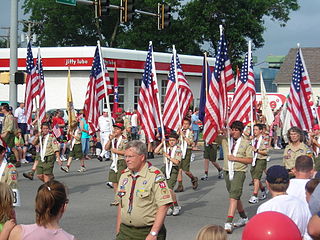
Scouting in Oklahoma has a long history, from the 1910s to the present day, serving thousands of youth in programs that suit the environment in which they live.

The Disneyland Resort is an entertainment resort in Anaheim, California, United States. It is owned and operated by The Walt Disney Company through its Experiences division and is home to two theme parks, three hotels, and the Downtown Disney shopping, dining, and entertainment district.

The Adventures of Pete & Pete is an American coming of age sitcom created by Will McRobb and Chris Viscardi for Nickelodeon. It focuses on two brothers, both named Pete Wrigley, and their humorous and surreal adventures in suburbia among their equally eccentric friends, enemies, and neighbors.

Red Rackham's Treasure is the twelfth volume of The Adventures of Tintin, the comics series by Belgian cartoonist Hergé. The story was serialised daily in Le Soir, Belgium's leading francophone newspaper, from February to September 1943 amidst the German occupation of Belgium during World War II. Completing an arc begun in The Secret of the Unicorn, the story tells of young reporter Tintin and his friend Captain Haddock as they launch an expedition to the Caribbean to locate the treasure of the pirate Red Rackham.

The Owl is a supervillain appearing in American comic books published by Marvel Comics. The character is depicted usually as an enemy of the superheroes Daredevil, Spider-Man and Black Cat. Created by writer Stan Lee and artist Joe Orlando, the character first appeared in Daredevil #3.

Bronson Canyon, or Bronson Caves, is a section of Griffith Park in Los Angeles that has become known as a filming location for many films and television series, especially Westerns and science fiction, from the early days of motion pictures to the present.
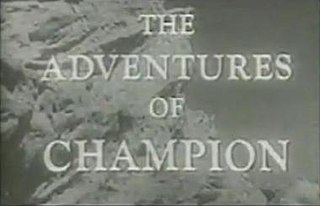
The Adventures of Champion is an American children's Western television series that aired from September 23, 1955, to March 3, 1956, for 26 episodes on CBS. In the United Kingdom, the series was re-broadcast under the title Champion the Wonder Horse. The series was repeated on and off by the BBC in the UK throughout the 70s, 80s and early 90s, with its final BBC broadcast being the episode "The Stone Heart" on 23 January 1993.
Scooby-Doo! Classic Creep Capers is an adventure game published by THQ for the Nintendo 64 and Game Boy Color, based on the Hanna-Barbera cartoon Scooby-Doo, Where Are You!. The Nintendo 64 version, developed by Terraglyph Interactive Studios, was released in November 2000, while the Game Boy Color version was developed by Digital Eclipse Software, and released in February 2001. A PlayStation version, identical to the Nintendo 64 version, had been in development by Terraglyph Interactive Studios but was later cancelled.
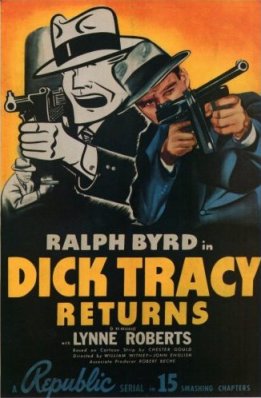
Dick Tracy Returns (1938) is a Republic Movie serial based on the Dick Tracy comic strip. It was the eleventh of the sixty-six serials Republic produced and a sequel to the 1937 serial Dick Tracy, with Ralph Byrd reprising his role as the title character. It was successful enough that two further sequels were released in 1939 and 1941, and Byrd become so connected with the character he went on to play him in a subsequent television series.
"Utopia" is the eleventh episode of the third series of the revived British science fiction television series Doctor Who. It was broadcast on BBC One on 16 June 2007. It is the first of three episodes that form a linked narrative, followed by "The Sound of Drums" and "Last of the Time Lords". The episode serves to re-introduce the Master, a Time Lord villain of the show's original run who last appeared in the 1996 television movie Doctor Who.
"The Truth" is the two-part season finale of the ninth season of the American science fiction television series The X-Files. "The Truth", the 19th and 20th episodes of the season and the 201st and 202nd episodes overall, originally served as the series finale for the series until The X-Files was revived in January 2016. First aired together on the Fox network on May 19, 2002, the episodes were written by series creator Chris Carter and directed by Kim Manners. "The Truth" was the most-watched episode of the ninth season and was seen by 13.25 million viewers upon its initial broadcast. The finale received mixed reviews, with many commentators criticizing the episode's lack of closure. Others were pleased with the full return of actor David Duchovny to the series, as well as the episode's conclusion.
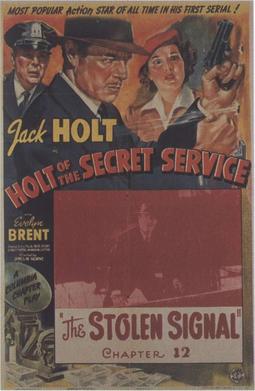
Holt of the Secret Service (1941) was the 16th serial released by Columbia Pictures.
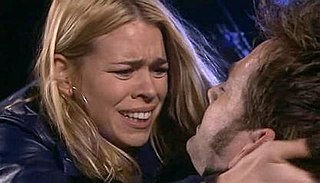
"The Stolen Earth" is the twelfth episode of the fourth series and the 750th overall episode of the British science fiction television series Doctor Who. It was first broadcast on BBC One on 28 June 2008. The episode was written by show runner and head writer Russell T Davies and is the first of a two-part crossover story with spin-offs Torchwood and The Sarah Jane Adventures; the concluding episode is "Journey's End", the finale of the fourth series, broadcast on 5 July.
The Japanese Village and Deer Park is a defunct amusement park formerly located in Buena Park, California.
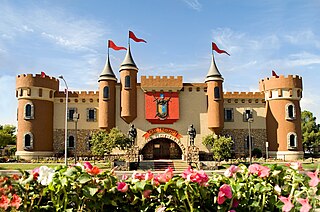
Golfland Entertainment Centers are a chain of family amusement centers, miniature golf courses, and water parks located in California and Arizona. The company was founded in 1953.
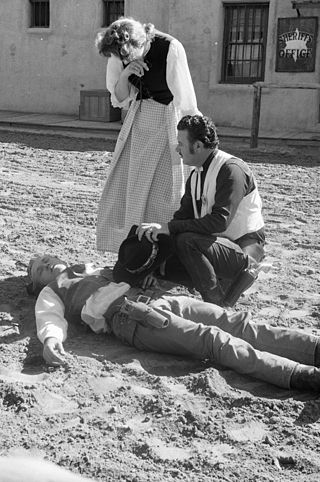
Corriganville Movie Ranch was a working film studio and movie ranch for outdoor location shooting, as well as a Western-themed tourist attraction. The ranch, owned by actor and stuntman Ray "Crash" Corrigan, was located in the foothills of the Santa Susana Mountains in the Santa Susana Pass area of Simi Valley in eastern Ventura County, California. It was destroyed by wildfires in 1970 and 1979. The site is currently a public park in the City of Simi Valley, called Corriganville Park, and operated by Rancho Simi Recreation and Park District.
Eric Hamilton Wilson is a Canadian author of young adult fiction. His detective novels follow the adventures of Tom and Liz Austen, young sleuths in Canada. Wilson has taught elementary and secondary school in White Rock, British Columbia, and has a B.A. from the University of British Columbia.
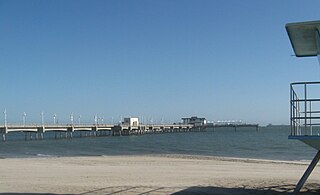
Belmont Veterans Memorial Pier is a pier in Belmont Heights, Long Beach, California.

A serial film,film serial, movie serial, or chapter play, is a motion picture form popular during the first half of the 20th century, consisting of a series of short subjects exhibited in consecutive order at one theater, generally advancing weekly, until the series is completed. Usually, each serial involves a single set of characters, protagonistic and antagonistic, involved in a single story, which has been edited into chapters after the fashion of serial fiction and the episodes cannot be shown out of order or as a single or a random collection of short subjects.

Santa Monica Army Air Forces Redistribution Center or Redistribution Station No.3 was a complex of buildings and hotels located in Santa Monica, California used to house troops during and after World War 2. US Army Air Force picked the Santa Monica site as Douglas Aircraft Company has a large Aerospace manufacturer operated there at Clover Field, also called Santa Monica Army Air Base). Opened in November 1943, the Redistribution opened out of leased buildings and land, most on what is now the Santa Monica State Beach. Crews rotation from Europe war and the Pacific War were able to rest and relax before their next assignment. At its peak, the complex covered 65 acres and had a staff of 1,200. Many of the staff at the center were from the Women's Army Corps. Organized social events were put on by the Santa Monica-Ocean Park chapter of the American Red Cross. At the end of the war, the complex became a processing center for troops heading home. Over 35,000 airmen had been processed at the center. Next, the complex processed prisoners of war heading home. The complex was deactivated on 15 November 1945 and the last leased building was closed in January 1947. Most of the buildings are in what is called Ocean Park, California on Ocean Avenue. The Army Air Force operated other Redistribution Centers in Atlantic City, Miami, San Antonio, Greensboro and Santa Ana, California at Camp Davis.
References
- ↑ Woolery, George W. (1985). Children's Television: The First Thirty-Five Years, 1946-1981, Part II: Live, Film, and Tape Series. The Scarecrow Press. pp. 418–419. ISBN 0-8108-1651-2.
- ↑ Ahlers, Robert. "Boy Actors: Robert Ahlers" . Retrieved 6 September 2012.
- ↑ BBC Genome Project